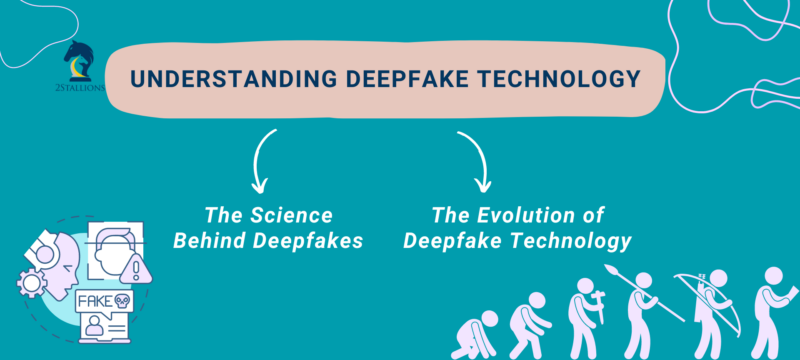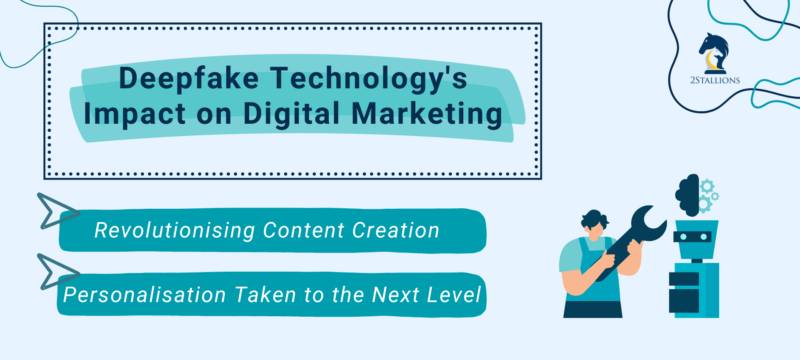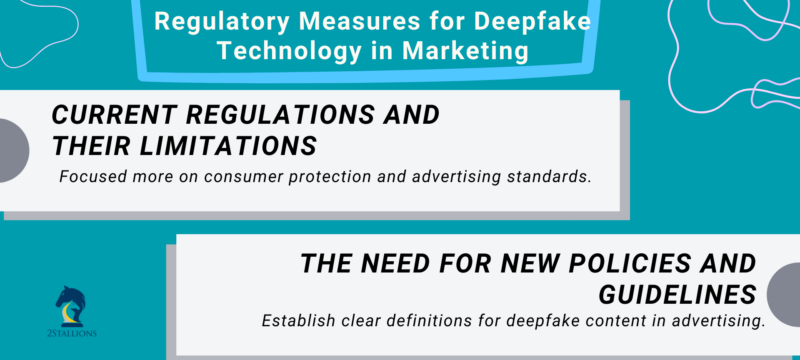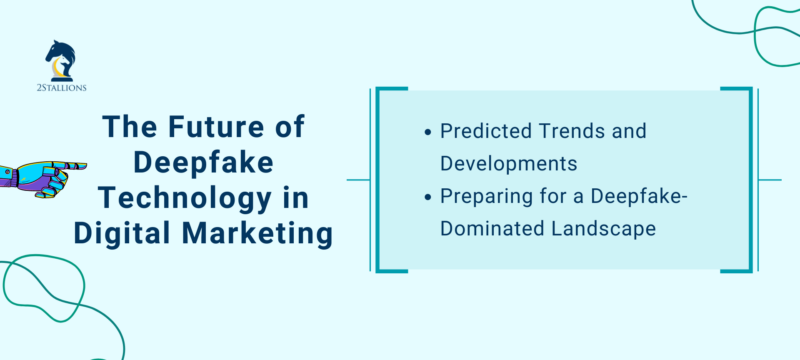SHARE

As we move further into 2025, the digital landscape is evolving vastly. One of the most transformative technologies to emerge in recent years is deepfake technology. This powerful tool has profound implications for various sectors, particularly digital marketing. Understanding how deepfakes reshape business marketing strategies is essential for marketers and consumers.

Understanding Deepfake Technology
The Science Behind Deepfakes
Deepfake technology is anchored in artificial intelligence, particularly a subset known as deep learning. This method enables computers to learn and make decisions based on vast amounts of data. By using a neural network called a Generative Adversarial Network (GAN), deepfake systems can create strikingly realistic images and videos, convincingly altering faces and voices.
The learning process involves two neural networks: one generates content and evaluates it. The generator creates images or audio that strive to mimic real people while the discriminator assesses them against authentic media. This back-and-forth process continues until the generator produces sufficiently realistic outputs that can deceive even experts.
The Evolution of Deepfake Technology
As deepfake technology continues to evolve, so does the need for legal frameworks to govern its use. The legal landscape surrounding deepfakes can be patchy, with laws varying significantly across jurisdictions. In some regions, existing laws concerning copyright, defamation, and privacy may provide a degree of protection against harmful applications of deepfakes. Deepfake technology continues to evolve, as does the need for legal frameworks to govern its use. The legal landscape surrounding deepfakes currently can be patchy, with laws varying significantly across jurisdictions. In some regions, existing laws concerning copyright, defamation, and privacy may provide a degree of protection against harmful applications of deepfakes.
Moreover, the entertainment industry has begun exploring the creative potential that deepfake technology provides. Filmmakers can resurrect the likenesses of beloved actors for sequels or spin-offs, allowing for a seamless continuation of beloved narratives. This has sparked discussions about the ethical implications of using such technology, particularly concerning consent and the portrayal of individuals who may no longer be alive to approve their digital likenesses. Furthermore, the potential for deepfakes to enhance virtual reality experiences is being investigated, promising to immerse audiences in ways previously thought impossible.
However, the rise of deepfake technology also raises significant concerns regarding misinformation and security. As the technology becomes more accessible, the risk of malicious use increases, leading to deceptive content that can manipulate public opinion or tarnish reputations. Governments and organisations are now grappling with the challenge of developing effective countermeasures to identify and mitigate the impact of deepfakes, striving to balance innovation with the need for ethical standards in digital media.
Deepfake Technology’s Impact on Digital Marketing
Revolutionising Content Creation
The introduction of deep fake technology has revolutionised the content creation process. Marketers can now generate personalised video ads featuring brand ambassadors, celebrities, or even customers themselves—all with the click of a button. This reduces production costs and allows brands to respond to current events and trends.
Consider, for instance, a fictional coffee brand that releases celebratory videos featuring a favourite local celebrity endorsing its new blend. By using deepfake technology, the brand can create authentic-looking engagements without needing the celebrity on-site for filming. This agility enables marketers to keep their content fresh and relevant. Furthermore, the ability to produce high-quality video content at a fraction of the traditional cost means that even smaller brands can compete in the digital space, levelling the playing field and fostering greater creativity across the industry.
Personalisation Taken to the Next Level
Deepfake technology allows marketers to create hyper-personalised content. By analysing consumer data, brands can develop targeted advertisements that speak directly to individual preferences and behaviours. Imagine receiving a marketing email featuring a video where a brand ambassador personally addresses you by name, discussing your previous purchases and suggesting new items tailored to your tastes.
This level of personalisation can enhance consumer engagement and loyalty, providing brands with an unparalleled opportunity to connect meaningfully with their audience. Enhanced user experiences stemming from tailored content lead to higher conversion rates, making deepfake technology a special prospect for digital marketers.
Moreover, as consumers become increasingly accustomed to personalised experiences, brands that leverage this technology can cultivate a sense of exclusivity and intimacy, further solidifying their relationship with customers. As a result, the potential for deepfake technology to transform the landscape of digital marketing is immense, opening up new avenues for creativity and engagement that were previously unimaginable.
The Ethical Implications of Using Deepfake in Marketing
Balancing Innovation and Integrity
While deepfake technology offers significant benefits in digital marketing, it also raises ethical questions. The capacity to create convincing but entirely fabricated content can threaten the integrity of messages brands wish to convey. As consumers, we rely on authenticity and transparency, and the misuse of deepfake technology could damage trust.
Balancing innovation with integrity in marketing is paramount. Marketers must leverage this powerful technology responsibly to maintain consumer trust and loyalty, which can be easily lost through perceived manipulation. The challenge lies in establishing a framework that embraces the creative potential of deepfakes and prioritises ethical standards. This might involve implementing clear disclaimers or labelling to inform consumers when engaging with altered content, fostering an environment of honesty and accountability.
The Potential for Misuse and Deception
Deepfakes can easily be weaponised, leading to the potential for misuse and deception. This includes creating false endorsements or misleading advertisements that could misguide consumers. Furthermore, consumers may struggle to distinguish between genuine and manipulated content, leading to a greater demand for transparency in digital marketing.
Establishing ethical guidelines and using deepfake technology appropriately is vital for safeguarding brand reputation and consumer trust. The battle against misinformation starts with responsible marketing practices.
Moreover, the implications of deepfake technology extend beyond mere marketing; they touch upon broader societal issues, such as the erosion of public trust in media and the potential for increased scepticism towards all forms of digital content. As brands navigate this complex landscape, they must consider the immediate effects of their marketing strategies and the long-term repercussions on consumer perceptions and societal norms. Engaging in open dialogues with consumers about such technologies can help mitigate fears and foster a more informed audience, ultimately leading to a healthier relationship between brands and their customers.
Regulatory Measures for Deepfake Technology in Marketing
Current Regulations and Their Limitations
As it stands, rules surrounding deepfake technology are still in their infancy. Existing laws often have trouble keeping up with the rapid development of technology. Regulations focus more on consumer protection and advertising standards rather than specifically addressing the nuances of deepfake content.
This lack of stringent regulation can lead to varying standards across different industries, creating ambiguity. Without clear policies, brands may inadvertently fall into ethical traps when deploying deepfake content. For instance, a marketing campaign that employs a deepfake of a celebrity could mislead consumers about the endorsement, potentially resulting in legal repercussions and damage to the brand’s reputation. The implications of such actions extend beyond the immediate financial impact, as they can erode consumer trust and contribute to a broader societal scepticism towards digital media.
The Need for New Policies and Guidelines
In light of the growing use of deepfakes in marketing, there is a pressing need for new policies and guidelines governing their use. Stakeholders, including brands, regulatory bodies, and consumers, must come together to devise standards ensuring ethical practices resonate within this evolving landscape.
- Establish clear definitions for deepfake content in advertising.
- Develop protocols for verifying and labelling deepfake media.
- Create educational campaigns to raise consumer awareness about manipulated content.
As these guidelines develop, the digital marketing industry can foster a more accountable environment where innovative techniques thrive without compromising ethics. Furthermore, it is essential to consider the international implications of deepfake regulations as digital content transcends borders. Countries may adopt disparate approaches to regulation, leading to a patchwork of laws that complicate compliance for global brands. Collaborative efforts among nations could pave the way for a more unified stance on deepfake technology, ensuring that ethical marketing practices are upheld worldwide. Additionally, engaging with technologists and ethicists in these regulations will help create a robust and adaptable framework for future technology advancements.
The Future of Deepfake Technology in Digital Marketing
Predicted Trends and Developments
Looking ahead, the trajectory of deepfake technology indicates an even greater integration into digital marketing strategies. As the technology evolves, brands will likely explore its potential in live-streaming advertisements and real-time video interactions, further enhancing audience engagement.
We can anticipate collaborations between brands and AI developers to create bespoke deepfake solutions tailored to specific marketing needs. As a result, businesses will have the tools to craft more immersive narratives that resonate emotionally with consumers.
Preparing for a Deepfake-Dominated Marketing Landscape
Ultimately, businesses must prepare for a future where deepfake technology becomes commonplace in digital marketing. To successfully navigate the shifting landscape, teams must learn how to utilise this technology responsibly, invest in training about content authenticity, and stay updated on legislative developments. As the boundaries of marketing continue to be pushed, those who embrace deepfakes responsibly can harness its power to create engaging, authentic, and personalised consumer experiences while prioritising ethical considerations to maintain trust.
Frequently Asked Questions About The Rise of Deepfake Technology
What is deepfake technology?
Deepfake technology uses artificial intelligence to create or alter video and audio recordings so convincingly that they appear real, enabling highly realistic creations and difficult-to-detect fabrications.
How is deepfake technology transforming digital marketing in 2025?
In 2025, deepfake technology is transforming digital marketing by enabling brands to create highly personalised content, innovative advertising campaigns, and engaging customer interactions, while raising concerns about authenticity and trust.
What are the challenges associated with deepfake technology in digital marketing?
The main challenges include ethical concerns, such as the potential for spreading misinformation, damaging brand reputation through fake content, and the loss of public trust in media and advertising.
How can marketers ethically use deepfake technology?
Marketers can use deepfake technology ethically by ensuring transparency about artificial alteration uses, obtaining all necessary consents, and employing the technology to enhance user experience without deceiving the audience.

















